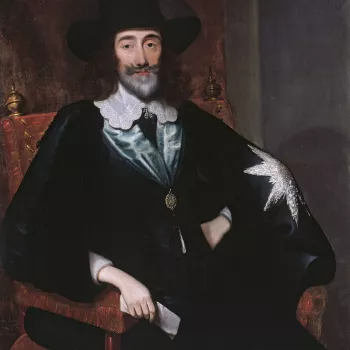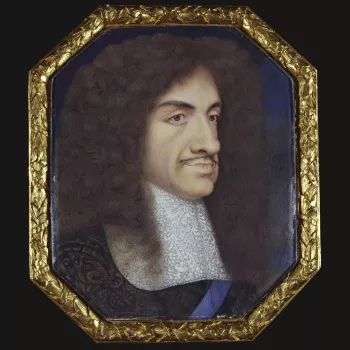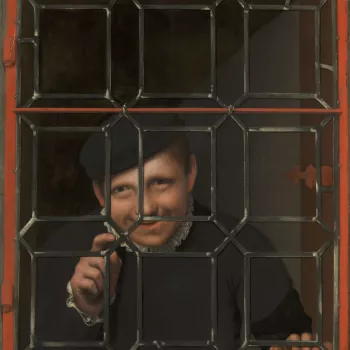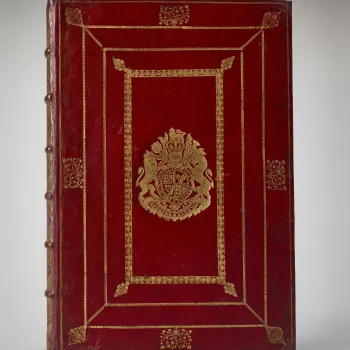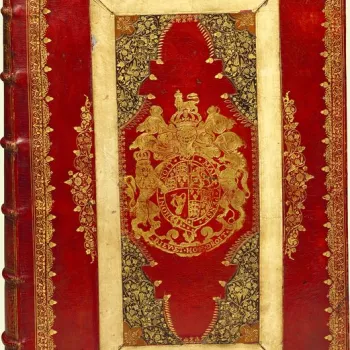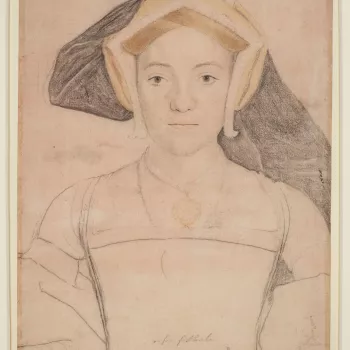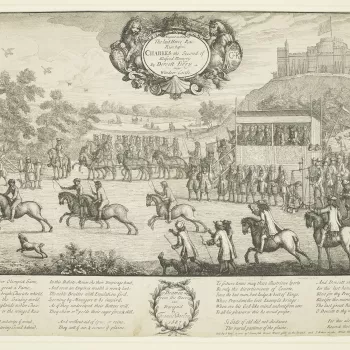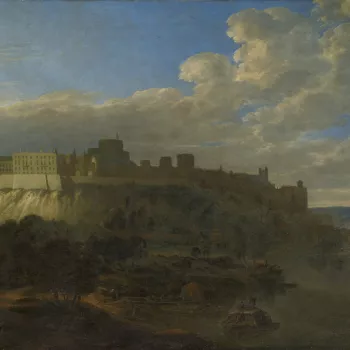
Introduction
Detail from a print, showing the execution of Charles I at Whitehall in 1649©
In January 1649, Charles I, King of England, Scotland and Ireland, was convicted of treason and publicly beheaded outside the Banqueting House in Whitehall. After years of Civil War, the nation was proclaimed a Commonwealth (a republic), led by the Parliamentarian General, Oliver Cromwell. Charles's family were forced into exile, the royal regalia were destroyed and the valuable contents of the palaces were sold.
In Scotland, Charles II had been crowned King of Scots at Scone on 1 January 1651 but, after defeat by Cromwell, he fled to the continent. The Commonwealth was short-lived and on 8 May 1660 the English Parliament proclaimed Charles II king and the monarchy was restored. The Stuarts who, under Charles I's father James VI and I, united the thrones of Scotland and England, had regained power.
This exhibition explores the art, architecture and furnishings of Charles II's magnificent court. It demonstrates how art played a crucial role in expressing and legitimising the authority of the restored monarchy following a period of extreme social and political upheaval. It also looks at the patronage of Charles's Catholic brother James, Duke of Albany and York, who succeeded him in 1685 as James VII and II.


